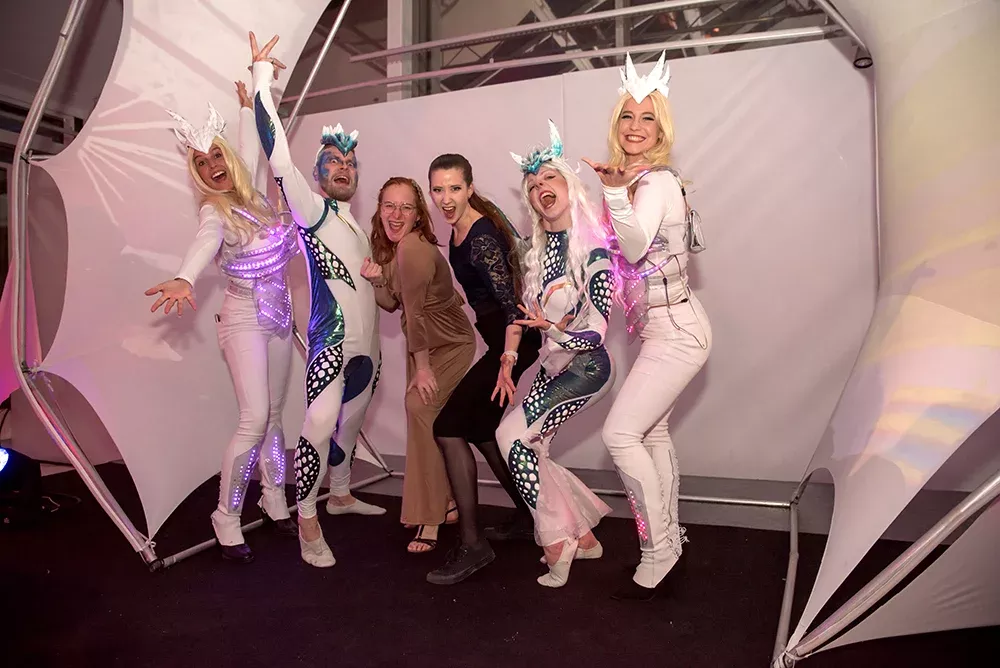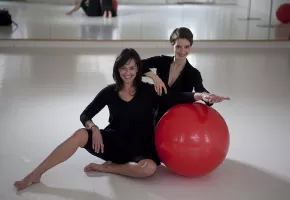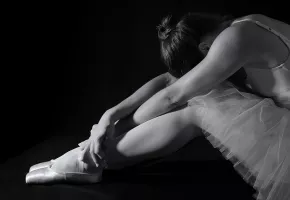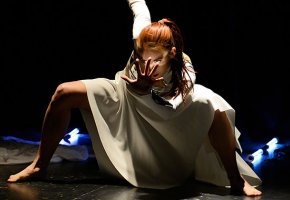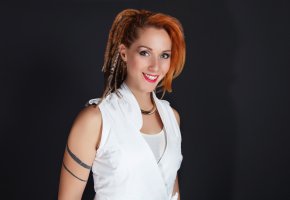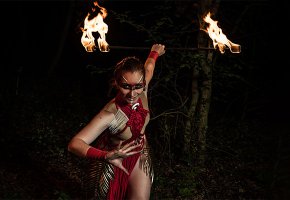The choreographer's work - The best way to results
Klára Lidová - a petite woman with an immense soul and a smile that spreads all around her. Her approach to her work as a choreographer and team leader is truly inspiring. Balanced, calm, harmonious.
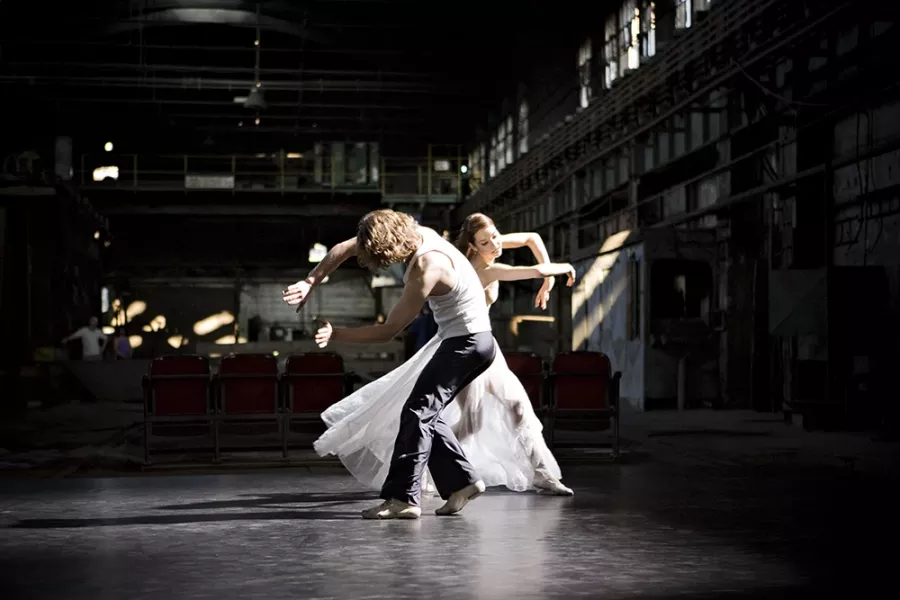
Working with her has been and continues to be incredibly inspiring and rewarding. Although her experience could allow her to lead the dancers and performers with a strict firm hand, she prefers to draw inspiration from the organic energy in the group. Klára creates space for creative exploration and lets the ideas flow. Many choreographers can’t imagine achieving results this way, and yet it works. You just have to have confidence in yourself and the team.
How does she approach leading dance groups and how has her perspective shaped and changed over the years? Read on and you may find out that it's time to try new approaches to dance, choreography and teamwork.
- Vision and results
- Fairness, tolerance, boundaries
- Working with energy
- Flow and inspiration
- Life on stage
- Importance of pause
- Added value
Vision and results
There are many ways to lead a team to fulfill a vision. To make the collaboration work in the long run, it is important to find a way of team leading that is not exhausting.
When I tried to push everyone to achieve results fast, I felt I was in a work mode that was extremely tiring even for me. At the same time, pressure can create a backlash from the team, so it's an energetic tug of war. In the long run, it doesn't lead to results.
During my studies, I experienced the classic Russian training methods of the 1970s and 1980s, where the ultimate motivation was humiliation. It worked for a certain group of my classmates, but not for the type of person like me. It caused me to completely shut down. Suddenly, everything I was normally good at was locked away from me. It was incredibly challenging for me to find the motivation to keep going. Working in a state of flow is definitely more productive for me.
Working with a group of people is about finding an acceptable path for every member of the team. Everyone can have different professional standards, a different approach to work whether on rehearsals or on their own, different visions of how much they are willing to push themselves. Their overall life energy plays a role as well.
It's always about how the energy works in the group of people who are supposed to create something. I have fellow choreographers who are downright choleric. They often yell and throw chairs in rehearsals, which would be a dealbreaker for me. The thing is, they have a group of dancers who are comfortable with that dynamic. I don't think that my calm way of leading a team would be better than the methods of a choleric choreographer.
Fairness, tolerance, and clear boundaries
The most important thing to me is fairness and honest communication, especially when having to deal with difficult topics. Another important point is to resolve things in a timely manner before frustration builds up, which could lead to a conflict situation.
Dialogue about unpleasant topics doesn't have to be a conflict.
In terms of conserving my own energy, I have learned to deal with problems as soon as they arise. First I take my time to observe how the matter will evolve over time. Once I see the same pattern of behavior repeating over and over again I try to address the problem in a dialogue to figure out why it is happening. Once we have discussed the topic with the dancer involved we either part ways or find a viable way to cooperate in the future.
Working with energy
When working with a team, I think the most important thing is to guard your own energy and to work in harmony.
When we are exhausted our nervous system does not have the capacity to fully perceive and enjoy the beauty. Motivation is lost and long-term vision can stagnate. It is only when I have enough energy that I can think creatively and enjoy the results.
When I'm exhausted for several days in a row, I have to ask myself "What's not working in my life?". Either I'm not getting enough rest and then it's pretty simple. But it can also be more complex than that and either something in my personal life is not working or some aspect of working with a given group of people is not exactly harmonious. Most of the time it’s not my brain that sends me a warning signal that something is not clicking. It’s my body and my feelings who let me know.
The most important language we can learn is the language that our feelings and our body speak.
It seems obvious as long as everything works. Once the life energy runs out, most probably something in our body will stop working or an emotional crash could come. Only then do we understand that we had an incorrect belief about ourselves. Because once you have an idea of yourself that is out of touch with reality, then gradually your energy will drain away until one day it runs out.
I have gone through different periods of my career and personal development, such as the ones where I tried to push myself and the team to get results. I tried to bring even the weaker links in the chain to a common vision of what the results should be. Gradually, however, I found out that being in the role of someone who has to have the final say is energetically and socially uncomfortable for me. So I started to look for a different way to handle the position of a choreographer, and the calm path of harmony and trust in myself and the team works best for me in the long run.
Flow and inspiration
In the beginning I tried to be as prepared as possible.
Before I came to the first rehearsal, I had a precise vision. Everything perfectly planned and noted. I felt like I wouldn't be enough otherwise. But then, during the rehearsal process, it often turned out that this rigid structure created on paper didn't work in practice, which caused a lot of stress.
With my rigid preparation I didn't create the space for flow and I robbed myself of inspiration that the dancers themselves could have come up with. So I started looking for a compromise. Then absolutely magical things started to happen. We created what I couldn't have come up with the week before at my desk at home with headphones on.
"My job is to be more of a dance conductor."
I'm trying to get completely out of that hierarchy where the choreographer looks down on the group and has a rigid idea of what everything should look like.
My vision is a kind of flexible network. I'm on the same level as you in that network, and my job is to occasionally tweak that network to hold a better structure. Which is brilliant because then it creates the magic and allows me to have a moment of surprise: "Oh, this is beautiful."
There's supposed to be life on stage
Every dancer has their own energy, their own approach. Diversity is important.
A group often tends to choose one distinct energy and align with it. But then you end up with a homogeneous boulder that has no life in it. I like life on stage. Different energies, different takes on phrasing.
As a choreographer, I very often deal with saying "Yes, you're going the perfect way. Now let's differentiate it a little bit, let's create a symphony of energy and let's play with it."
The important role of the pause
Dancers tend to overwhelm choreography with movement.
Every dancer wants to show off, so the first phase creates an overload of ideas and movements. One virtuosic element after another becomes monotonous for the audience over time, no matter how much it is at the limit of the dancers' capabilities and feasibility.
"I feel like (and we know this even from everyday life) if we don't keep talking all the time, the fear of emptiness comes in. As if emptiness means something is wrong. I've learned that, on the contrary, a content-filled silence, the Japanese Zen silence, can be absolutely the most powerful thing I can observe and perceive."
The pause is incredibly meaningful. It is only through the pause that we draw the viewer's attention for further effect. The best things are often born out of silence.
Added value
When you watch a performance, can you point out the essence of art? What is the added value?
I used to be captivated by virtuosity. When I saw perfection. A perfect curve of a body, a perfect work with the music. I enjoyed choreographies overflowing with movement, because I was fascinated by the speed and precision that then emerges on stage. Gradually though, even as a dancer, I experienced a point where I experienced perfection too often, it became a routine and it headed towards burnout.
Then I started to notice, both as a viewer and as a choreographer, what was the overall feeling from the performance and the group. When the performers are really enjoying it and it fulfills them. That they're dancing their lives out there. The gestures and movements are not empty, they have content, there is emotion behind them.
Now I love to see the real joy of the dancers and the story that is told through the movement. Movement can convey what words cannot.
In conclusion
When dance becomes a profession, it often begins to turn into a routine.
It is inevitable. But we must not forget what brought us to dance and performance in the first place. After all, that’s what is so beautiful about it. The sincere joy of movement, self-expression, individuality. Sometimes everything doesn't have to be technically perfect when there's real emotion in the performance.
We work with artists. Each one of them is an incredibly creative being bursting with ideas. It's a shame to deprive ourselves of those ideas by not wanting to hear them. Whether it's because we have a clear vision, a choreography we don't want to interfere with, or we're just tired. Let's try (at least sometimes) to give space for sharing inspiration.
Let's create together and share the very enthusiasm for movement that brought us all together and continues to do so.
Sources: https://www.databazetance.cz
About the author

Tereza Adamusová
She has been on the artistic scene since 2010. She has taught juggling and performed with the group T.E.T.R.I.S. As a performer, she has been in several major productions and has performed in hundreds of shows around the world. Since childhood, she has been doing gymnastics and acrobatic synchronized swimming. As a dancer and actress she has performed in Czech musicals. She co-owns the Aliatrix agency and as creative director, she is also the main producer of all major projects.

